Motorola Razr 40 hands-on review: first impressions with the new generation Razr!
Foldable smartphones are slowly inching their way into mainstream popularity. To get there, they need two things — improved tech that makes the hinge thin and reliable, and easier mass production so they could be more affordable.
The Razr 40 obviously tries to strike a weird balance between being a more affordable foldable phone, but also not cheaping out on internal components too much. Still, some hardware choices make us do a double-take. Here’s the table with the essentials:
OK, so there are some regional differences. NA markets will get the faster LPDDR5 RAM and a smaller storage chip. However, international markets will get LPDDR4X and 256 GB of UFS 2.2 — that’s a bit of a low blow, UFS 2.2 is getting quite long in the tooth right now. While we don’t have concrete info on the storage chip for US markets, the wording made it seem that only the 256 GB models will get the slower chip.
Motorola Razr 40 Design & Colors
Vegan leather is the new black!
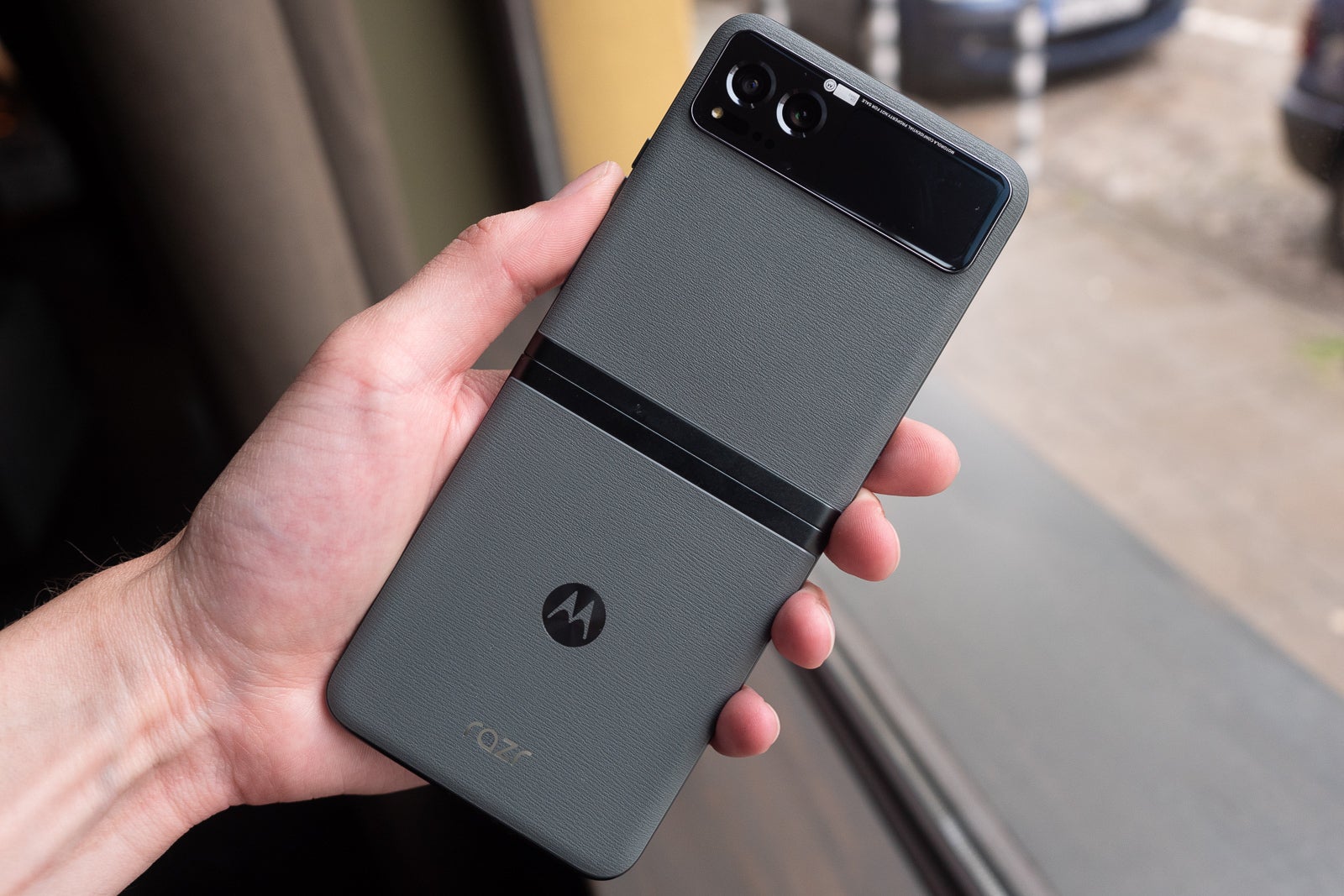
Hello, Moto (Image credit – PhoneArena)

All folded up (Image credit – PhoneArena)
The back is covered with a vegan leather finish, which we first experienced with the Motorola Edge 40 about a month ago. Really nice material — it’s super grippy, it feels like an escape from the current metal-glass meta, and it looks very classy! The color options for the Motorola Razr 40 are:
- Sage Green
- Vanilla Cream
- Summer Lilac
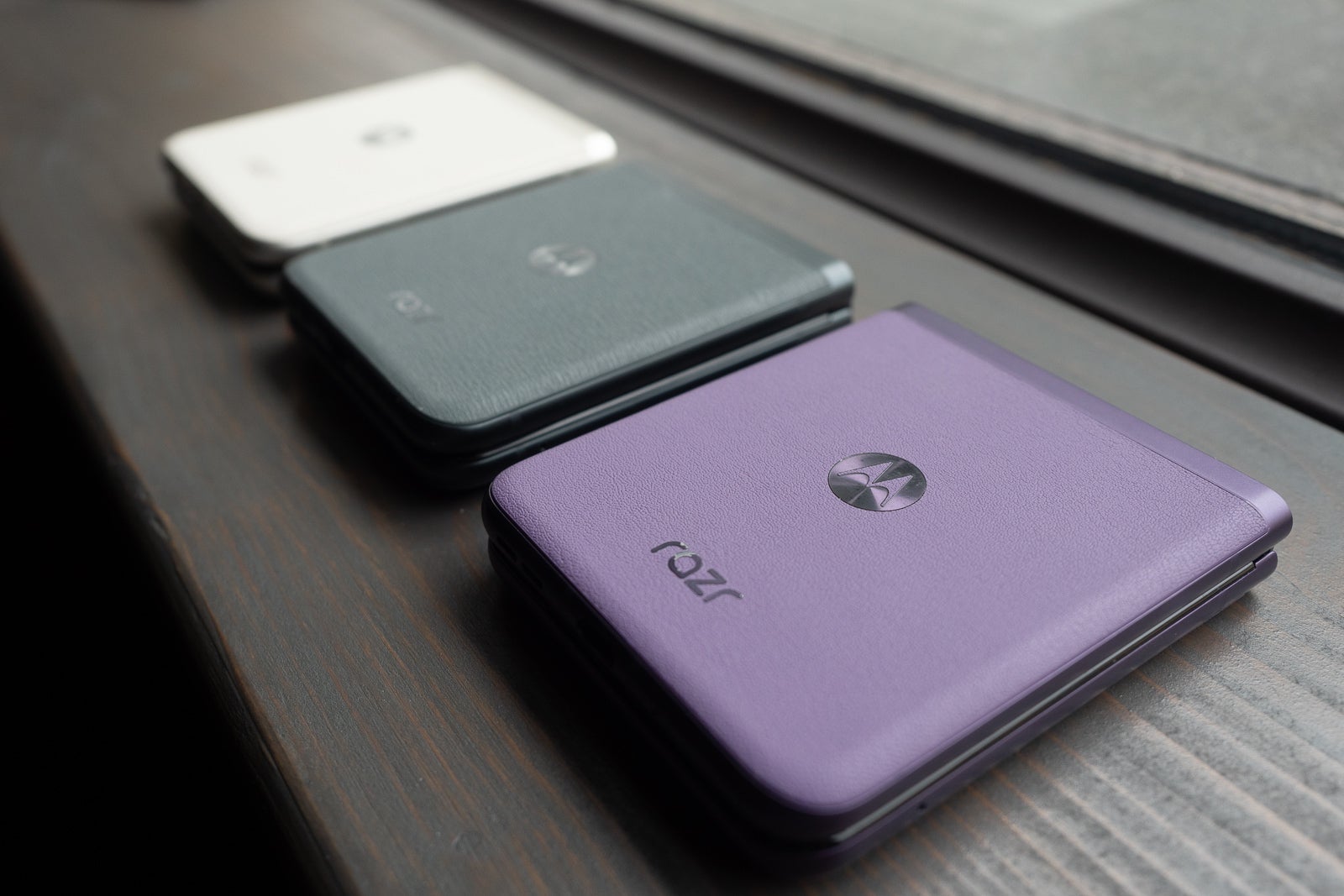
Motorola Razr 40 colors (Image credit – PhoneArena)
You will also notice that the back has a raised camera strip — sort of, kind of like on Pixels, but not exactly. This thing houses the two camera lenses and a tiny 1.5″ OLED display — one to show you notifications, or to use as a mini viewfinder when needed. Now, this design element is a bit dated, since other clamshells are already moving towards a bigger screen on the back. And, indeed, the Ultra has an all-screen look on its shell, which looks pretty cool.
But the regular Razr 40 here only has the ticker. We see an immediate benefit here — you don’t have a large display on the external shell of your foldable phone, so you don’t have to worry about scratches too much. Instead of slapping a plastic case on it, you will get to enjoy that leathery finish.
Other tidbits include the fingerprint scanner in the power button and two separate volume up and down buttons.
Motorola Razr 40 Display
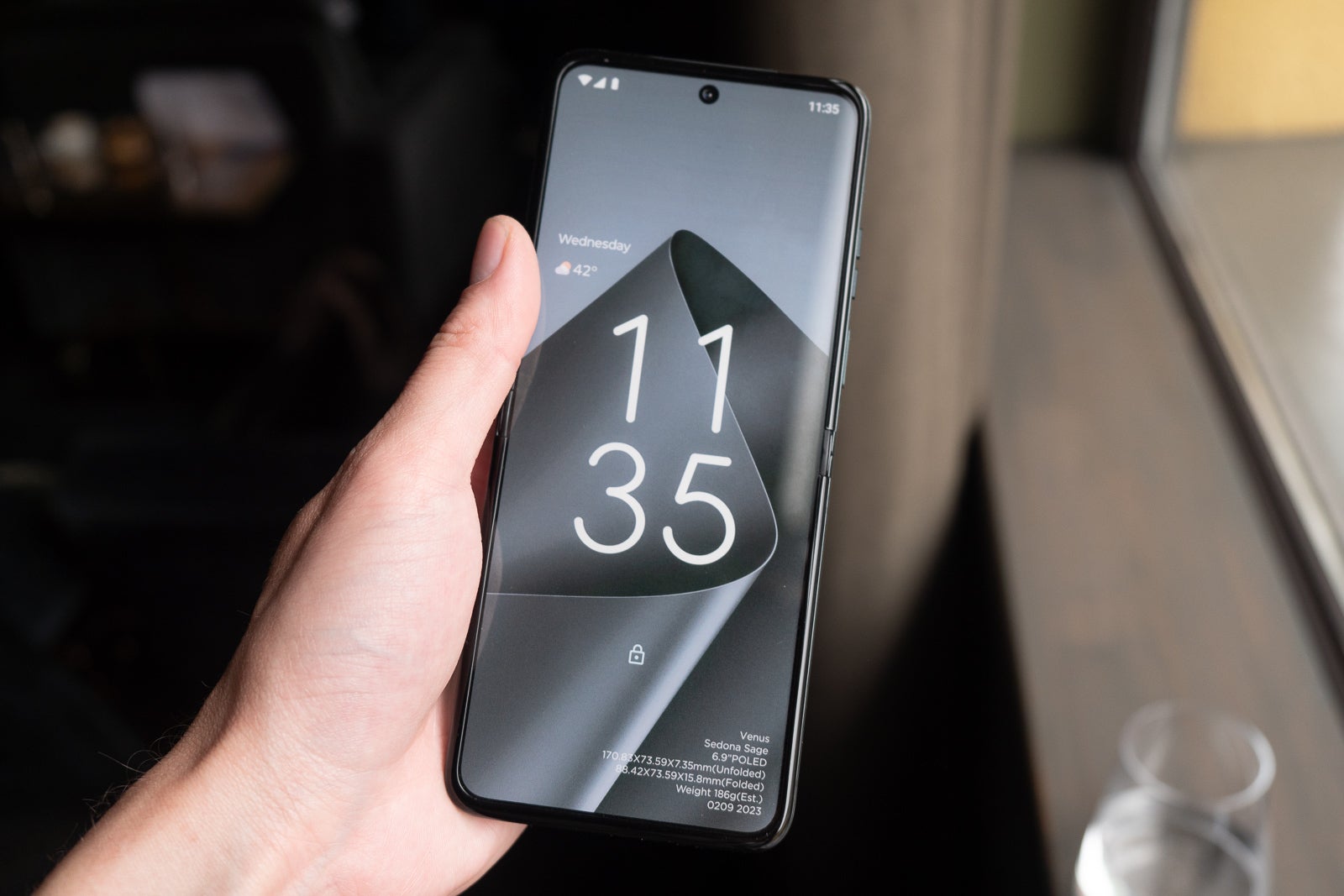
Taller than before (Image credit – PhoneArena)
The inside screen is a lovely AMOLED panel that can hit a refresh rate of 144 Hz. Not only that, if you activate Game Mode, its touch sampling rate increases to 360 Hz, from 240 Hz. So, obviously, we have the bases for a very responsive, fluid operation covered.
The screen colors looked good on close inspection, and that 2640 x 1080 pixel resolution is plenty good enough for a sharp image. Motorola says peak brightness here is 1,400 nits — obviously, the display can show HDR10 content, and it should be easy to view under direct sunlight.
As we mentioned in the design section — the crease is much less prominent, and much easier to ignore than what we are used to with the Galaxy Z Flip 4. We also appreciate that the bezels are a bit thinner than on the Motorola Razr (2022).
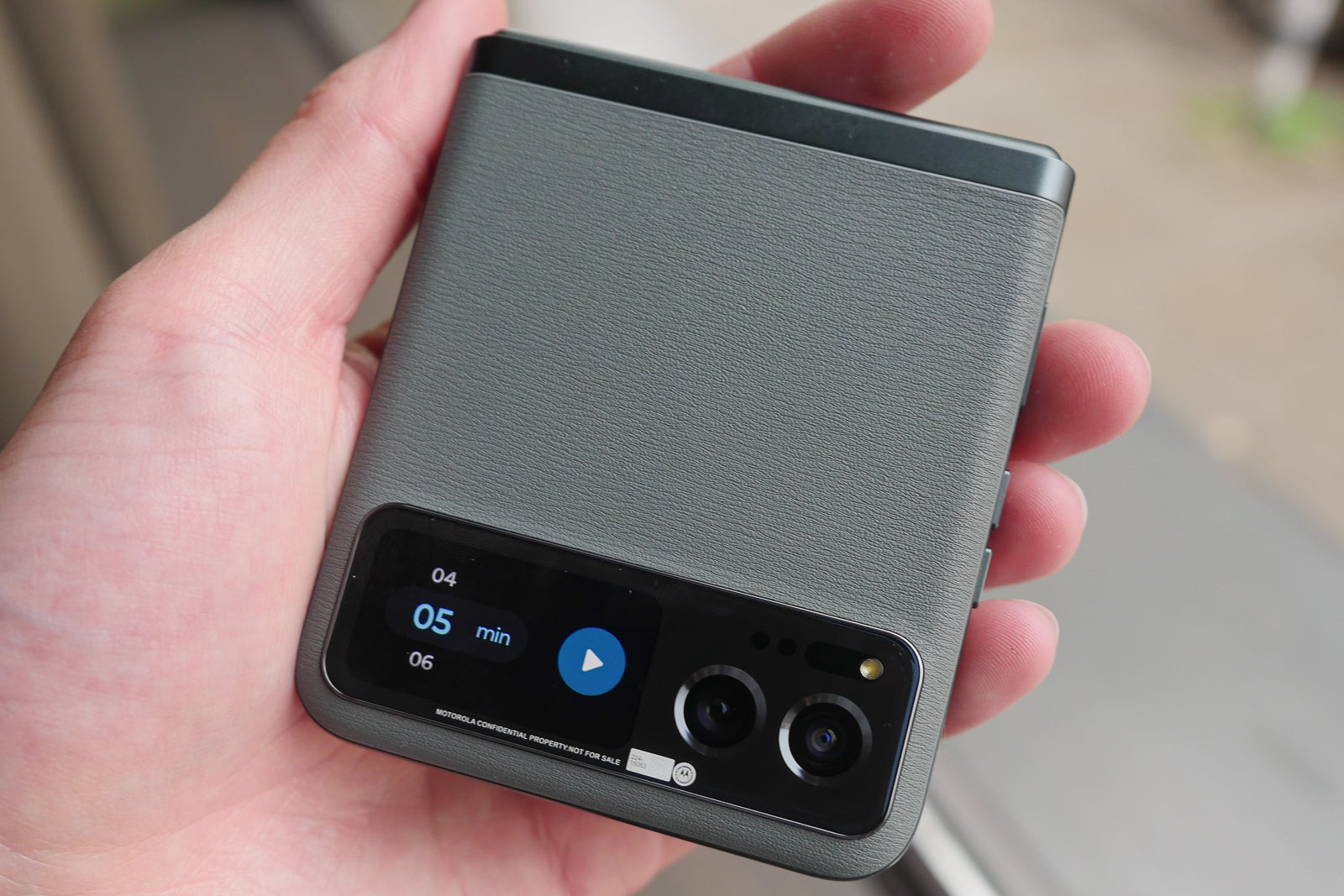
External ticker (Image credit – PhoneArena)
The external OLED display panel has a 1.5″ diagonal and is basically a notifications ticker, so not much to say about that. If you’ve been following clamshell foldables in the past 3 years — you’ve seen such a design and are familiar with its limitations. But it’s much nicer to have than a simple notifications LED, especially on a phone that is literally closed when not in use.
Motorola Razr 40 Camera
Slightly hopeful
The main camera has what appears to be a new sensor with a new lens — 64 MP with an aperture of f/1.7. By default, it will take 16 MP shots with 1.4μm binned pixels. We have to note, those are not the biggest individual pixels we’ve seen on smartphones recently, so light collection may or may not be an issue. The light (he-he) at the end of the tunnel is the wide aperture — f/1.7 is still pretty big by modern smartphone standards, so that may be enough to feed the sensor the needed information for short shutter times and sharp shots.
And, on the front, there’s a 32 MP selfie snapper. Now, we have to wonder why Motorola insists on putting high-density sensors in these tiny selfie cameras, especially since one of the selling points of this phone is that you can use the external display as a viewfinder and take selfies with the main camera. But again, we will judge performance when it comes time to review the device.
Motorola Razr 40 Performance & Benchmarks
That’ll do
The Motorola Razr 40 comes with a Qualcomm Snapdragon 7 Gen 1. When that chip was announced a year ago, Qualcomm presented it as a choice for budget gaming phones — a downgrade from the Snapdragon 8 Gen 1, but one that carries the core elements that would make the chip a high performer in smartphones.
Obviously, it won’t beat chipsets like the stellar Snapdragon 8+ Gen 1, but it’s no slouch. We would predict that the Motorola Razr 40 will do just fine for most casual use cases of today, but will lack the headroom to make it multiple years into the future. But it should be fine to at least live up to Motorola’s software update promise of 3 years.
Motorola Razr 40 OS / Android version
And yes, just like that, we have transitioned into the software talk. Motorola phones typically come with a very vanilla take on Android. Some light software elements are added to enhance the UX — like Moto gestures, app icon customization, and device theming.
Motorola Razr 40 Battery
What a big jump!
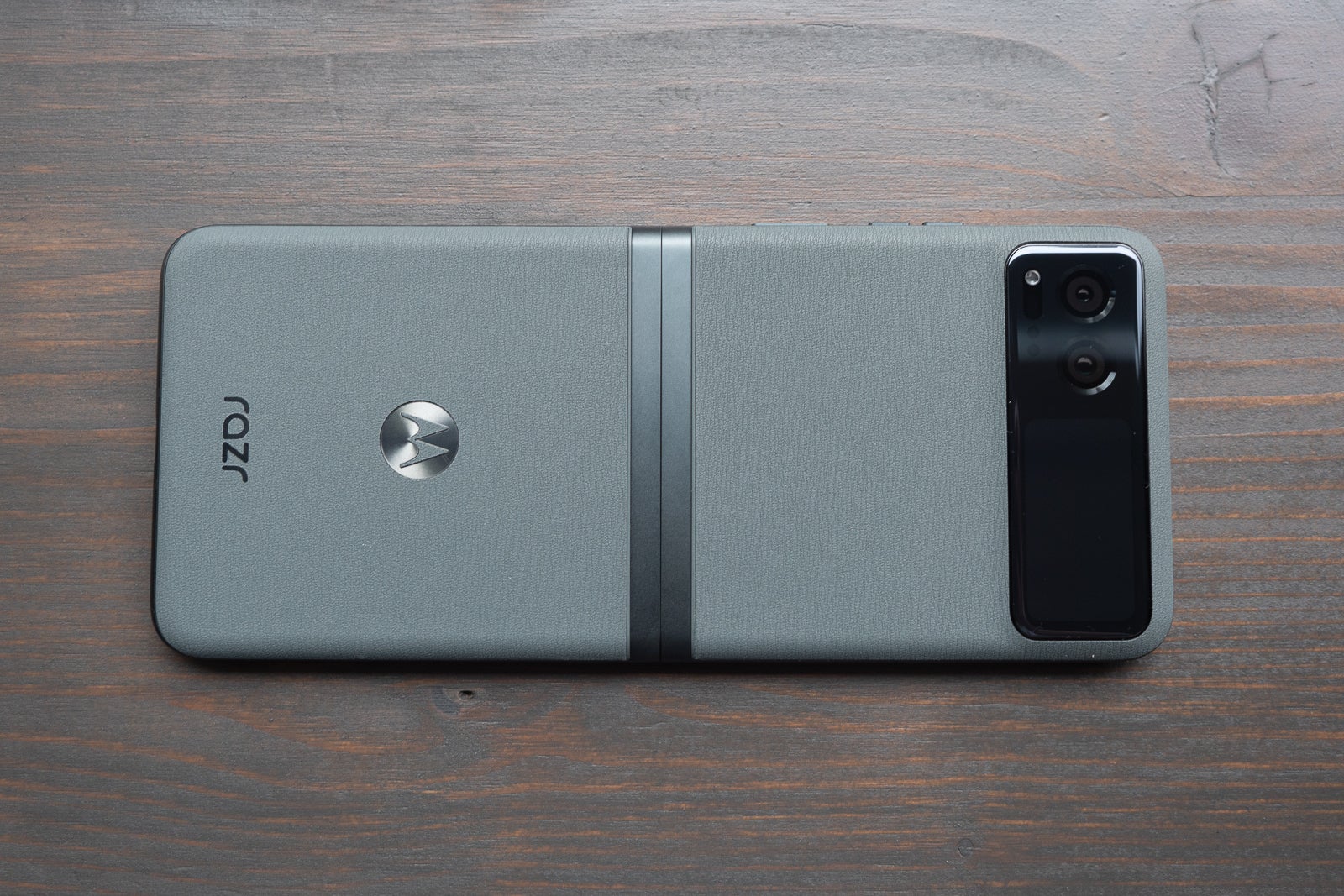
Where does it all fit? (Image credit – PhoneArena)
The Motorola Razr 40 has a 4,200 mAh battery, which is not the biggest out there, but definitely a hefty chunk of a powerpack. The Razr (2022) had 3,500 mAh, and the Galaxy Z Flip 4 has a 3,700 mAh cell.
Now, when we put that together with the chip that’s not an absolute power hog, we are hopeful that the Razr 40 might actually offer quite the battery endurance!
You will also be able to top it up with a 33 W Turbo Charger (the phone itself supports up to 30 W for fast charging). International models get that wallplug in the box, in the US it’s a separate purchase. Info on whether you will be able to use 3rd party fast chargers is pending, but we assume that you should be.
The Motorola Razr 40 will also support wireless charging but only 5 W, so not exactly “fast” there.
Motorola Razr 40 Audio Quality and Haptics
The Razr 40 has stereo speakers and proudly displays a Dolby Atmos certification. They are not the loudest speakers out there, but they do sound detailed and spatious. We’ll have to give them another listen in a quiet environment, but we’d say they are comparable to the Motorola Edge 40’s speakers, which we found to be quite nice, if a bit boxy. Naturally, there’s no 3.5 mm headphone jack.
As for haptics — Motorola has the clicks and clacks down and that know-how seems to have made it to the Razr 40. The phone vibrates with accurate, confident feedback.
Motorola Razr 40 Competitors
The Razr 40 will be launching in July, with a price-tag of €899 in Europe. We assume something in the ballpark of $900 stateside, but price conversions are not always 1 to 1.
The Z Flip phones have the more powerful hardware, a bigger outside screen (the Z Flip 5 may have an actual full display on the outside, like the Motorola Razr 40 Ultra), and Samsung’s ecosystem backing them up.
Motorola Razr 40 Summary and Final Verdict
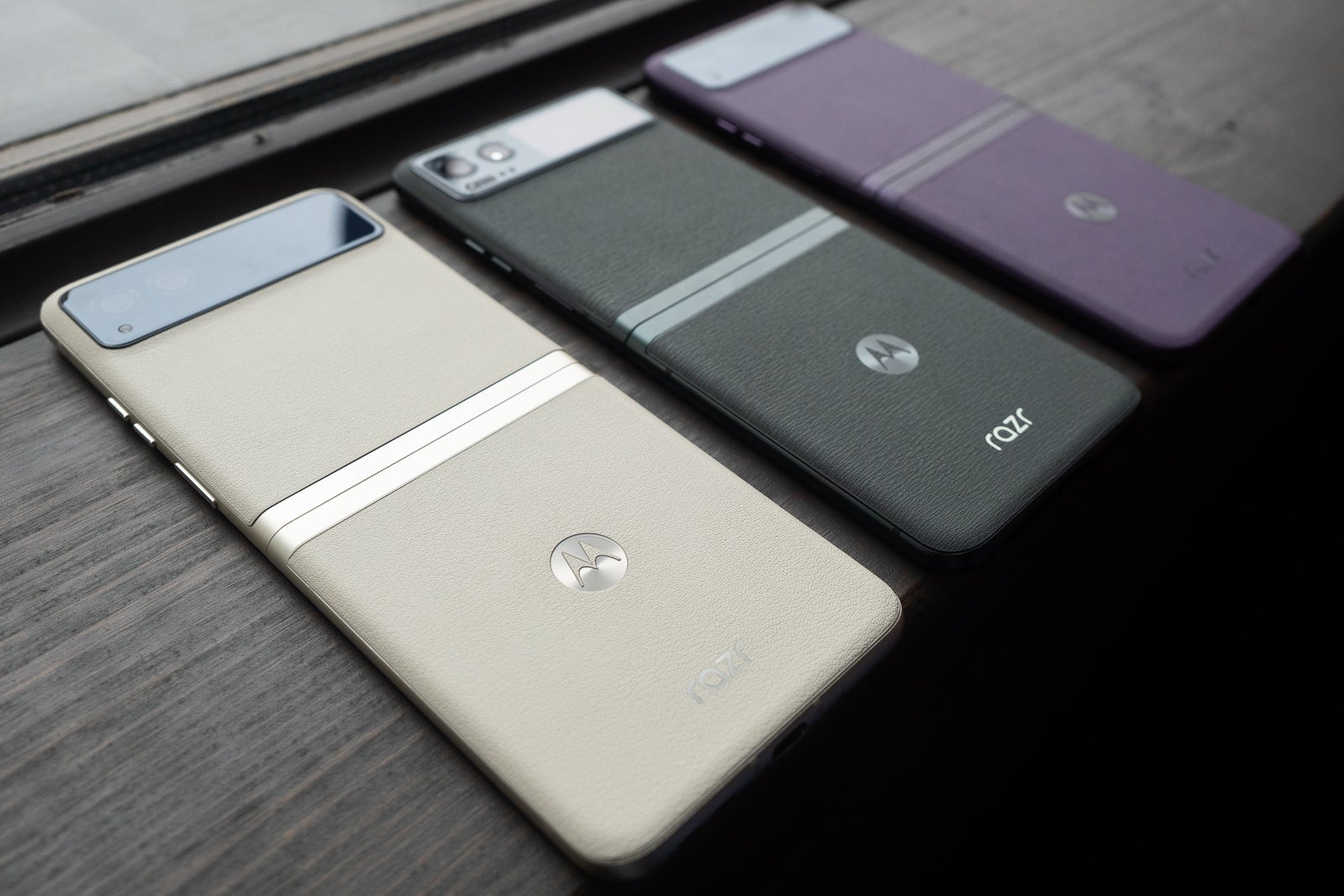
We’ll meet again (Image credit – PhoneArena)
We are slightly confused by the Razr 40 / Razr 40 Ultra split. The one we are looking at here is obviously meant to be the more “budget” choice, but we can’t say that €900 is exactly budget range. For that price, you are definitely taking a hit in specs and external display for usability. So, it’s definitely a phone for people that really, really want a foldable.
But then, the Galaxy Z Flip 4 also hovers around that price and seems to offer… a bit more value?
Though, we can definitely see the Razr 40 drawing in its own fans. That leathery finish is fantastic, and not everybody wants a super-fast processor. It will all hang on the camera performance and battery life, when it comes to it.
For all the latest Technology News Click Here
For the latest news and updates, follow us on Google News.

